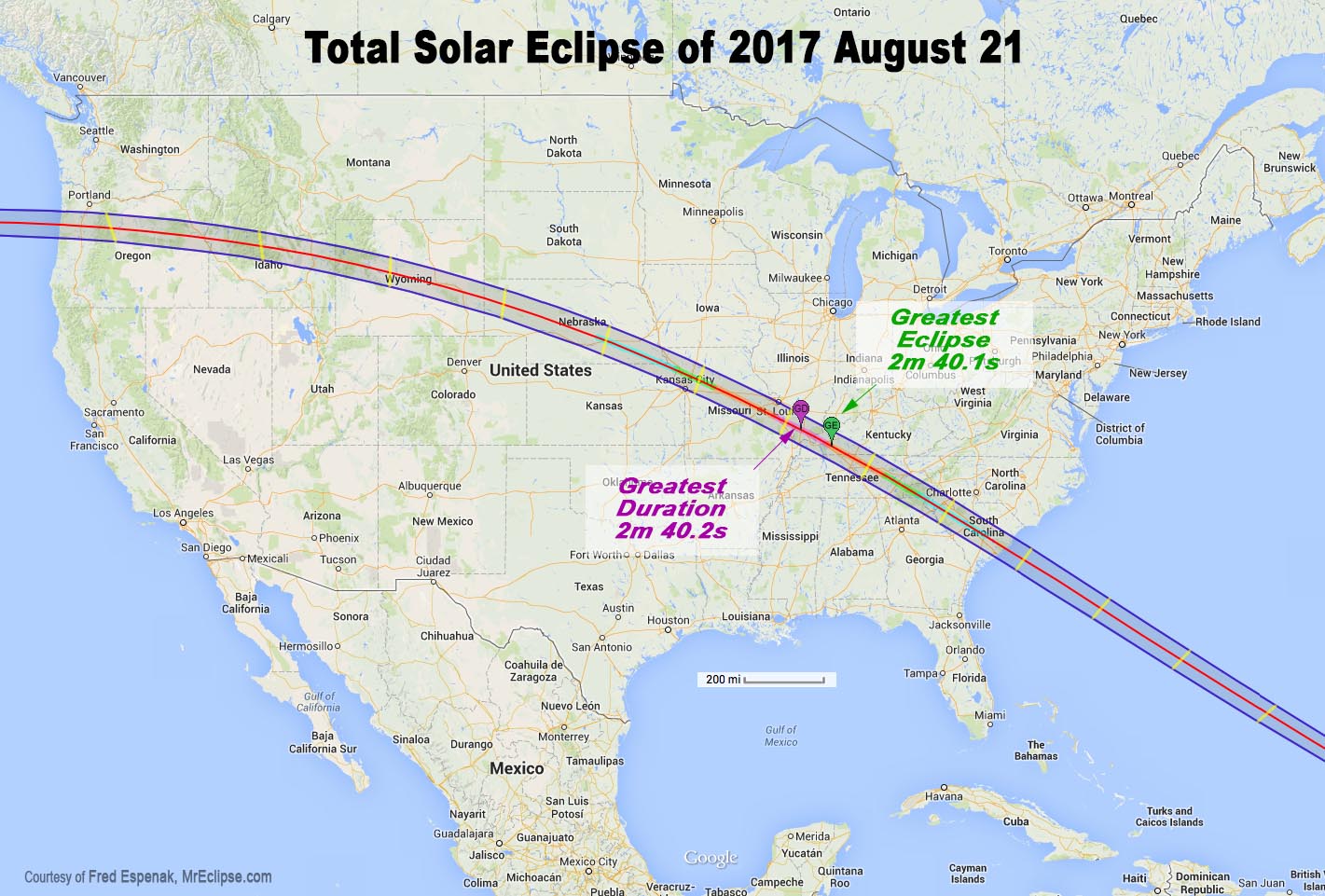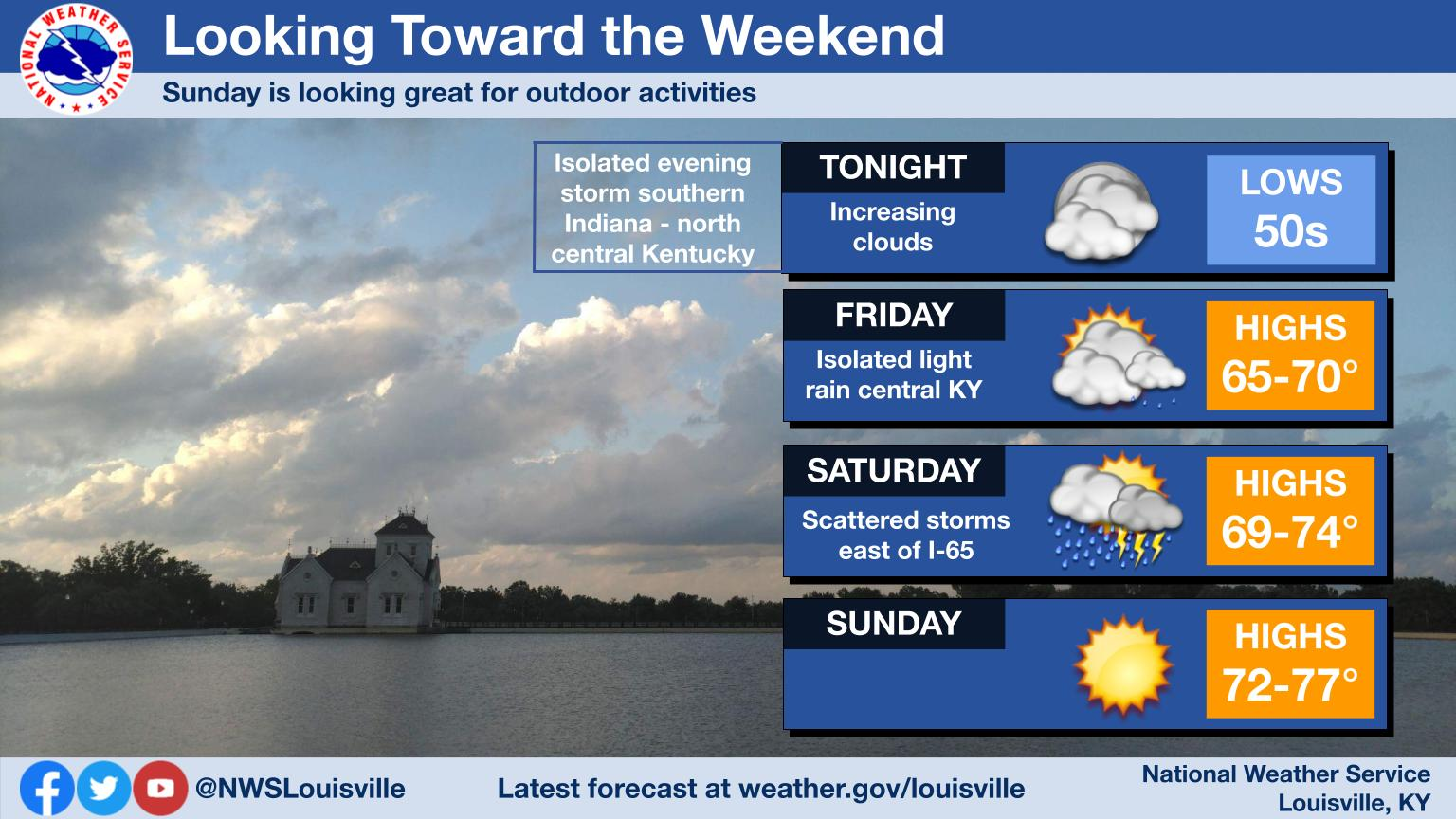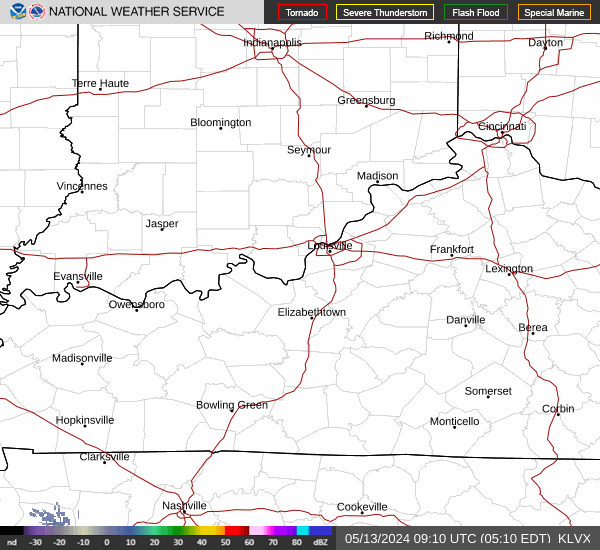Louisville, KY
Weather Forecast Office
Monday, August 21, 2017, a total solar eclipse will track from the Pacific to the Atlantic. The shadow of the moon will track over parts of Oregon, Idaho, Montana, Wyoming, Nebraska, Kansas, Missouri, Illinois, Kentucky, Tennessee, North Carolina, Georgia, and South Carolina. The total eclipse will begin near Newport, Oregon at 1:16 PM EDT and will end near Charleston, South Carolina at 2:48 PM EDT. A partial eclipse will occur for the rest of the United States. The next total eclipse that can be seen from a large portion of the United States will not occur until 2024. The next total eclipse that can be seen from the west coast to the east coast will be in 2045.
The point where the sun, moon, and earth line up most perfectly during the eclipse will occur 2.3 miles east of Cerulean on KY 624 near the intersection with J Stewart Cemetery Road in Trigg County. That is the "point of greatest eclipse" with virtually the same length of eclipse duration, two minutes and 40 seconds, as the "point of longest duration" that will take place in southern Illinois near Carbondale.
Main NASA Page for the 2017 Eclipse
|
|
 |
|
Above:Path of the 2017 Total Solar Eclipse credit: Fred Espenak - NASA/Goddard Space Flight Center |
Above: Total solar eclipse over Kentucky credit: https://www.greatamericaneclipse.com/best-places-to-view/ |
Sky Forecast Sources:
|
Current Hazards
Hazardous Weather Outlook
Storm Prediction Center
Submit a Storm Report
Advisory/Warning Criteria
Radar
Fort Knox
Evansville
Fort Campbell
Nashville
Jackson
Wilmington
Latest Forecasts
El Nino and La Nina
Climate Prediction
Central U.S. Weather Stories
1-Stop Winter Forecast
Aviation
Spot Request
Air Quality
Fire Weather
Recreation Forecasts
1-Stop Drought
Event Ready
1-Stop Severe Forecast
Past Weather
Climate Graphs
1-Stop Climate
CoCoRaHS
Local Climate Pages
Tornado History
Past Derby/Oaks/Thunder Weather
Football Weather
Local Information
About the NWS
Forecast Discussion
Items of Interest
Spotter Training
Regional Weather Map
Decision Support Page
Text Products
Science and Technology
Outreach
LMK Warning Area
About Our Office
Station History
Hazardous Weather Outlook
Local Climate Page
Tornado Machine Plans
Weather Enterprise Resources
US Dept of Commerce
National Oceanic and Atmospheric Administration
National Weather Service
Louisville, KY
6201 Theiler Lane
Louisville, KY 40229-1476
502-969-8842
Comments? Questions? Please Contact Us.



 Weather Story
Weather Story Weather Map
Weather Map Local Radar
Local Radar